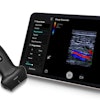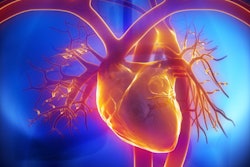
Adding focused cardiac ultrasonography (FoCUS) to clinical assessment of the cardiovascular health of patients at bedside improves diagnostic yield, according to a study published online August 5 in the Annals of Internal Medicine.
The findings offer clinicians a way to update the traditional "standard of care" bedside evaluation -- that is, a history and physical exam -- for cardiovascular disease, wrote a team led by Dr. Jeffrey Marbach of the University of Ottawa Heart Institute in Ontario, Canada.
"The limited evidence that supports 'classical' signs and symptoms of cardiovascular disease was observed in an era when late-stage presentation was common and detection of disease before onset of symptoms was rare," the authors wrote. "A more sensitive bedside toolkit to detect and quantify pathology before onset of progressive organ damage is increasingly needed, both to triage patients for more formal testing and to allow more rapid clinical decisions at the point of care."
The benefits of POC
Ultrasound has a wide array of imaging capabilities and can be used with everything from superficial vasculature to large intra-abdominal organs to cardiac chambers, the team noted. As such, point-of-care (POC) ultrasound is often used with bedside procedures such as central venous catheter insertion or pericardiocentesis.
The modality's use at bedside hasn't been broadly adopted, even though physical examination is understood to be often inaccurate. But interest in using ultrasound at bedside has increased, Marbach and colleagues wrote.
"Because a small but growing body of literature suggests potential advantages of adjunctive ultrasonography evaluation with physical examination, interest in its accuracy and applicability is increasing," the team wrote. "The possibilities for diagnostic improvement are particularly promising in patients requiring cardiovascular evaluation."
Transthoracic echocardiography has long been used for this purpose; its practitioners are trained in cardiac imaging. Bedside FoCUS offers a quicker, more easily repeatable way to perform a cardiovascular assessment, corresponding author Dr. Benjamin Hibbert, PhD, also of the University of Ottawa Heart Institute, told AuntMinnie.com.
"Our center has been using FoCUS for close to 10 years now, and it has completely changed our practice," he said. "We realized early that adding a FoCUS to physical exam provided meaningful incremental information at the bedside to help in diagnosing and managing our patients. This was even more apparent in our critically ill patients where rapid decisions needed to be made."
Increased sensitivity
For the study, the researchers conducted a review of Medline, Embase, and Web of Science for articles published between January 1990 to May 2019 that compared FoCUS-assisted clinical assessment with clinical assessment alone for the diagnosis of left ventricular systolic dysfunction, aortic or mitral valve disease, or pericardial effusion. They used transthoracic echocardiography as the reference standard. The group included nine studies in its analysis.
The authors found that adding FoCUS to clinical examination at bedside for cardiovascular applications did improve diagnostic yield -- with increased sensitivity and specificity for diagnosing left ventricular dysfunction, and increased sensitivity for diagnosing aortic or mitral valve disease.
| Performance of FoCUS when added to clinical exam at bedside | ||
| Performance measure | Clinical assessment alone | FoCUS-assisted clinical examination |
| Sensitivity | ||
| Diagnosing left ventricular dysfunction | 43% | 84% |
| Diagnosing aortic or mitral valve disease | 46% | 71% |
| Specificity | ||
| Diagnosing left ventricular dysfunction | 81% | 89% |
| Diagnosing aortic or mitral valve disease | 94% | 94% |
The findings indicate that using FoCUS with clinical assessment allows for greater detection of disease that might otherwise be missed by clinical assessment alone, Hibbert told AuntMinnie.com.
"The take-home message is that the standard assessment for cardiac pathology is limited, and adding a FoCUS to your assessment markedly increases your ability to detect pathology," he said. "While not directly addressed in this study, the next logical step is going to be seeing if we can use FoCUS to appropriately triage patients for formal echocardiography, which is often performed as a screening test. All healthcare systems are strapped for resources, and if we can rule out significant pathology with a careful exam and FoCUS, we may be able to safely defer formal testing in a large number of patients."




















